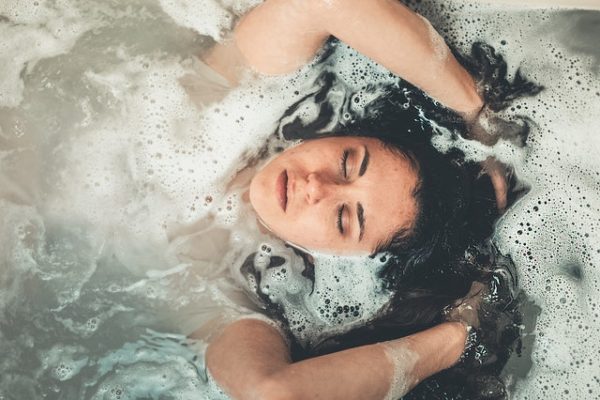Keratosis pilaris is unsightly and bothersome, and it affects a large number of people. You can master it with some caution and the correct advice.
Keratosis pilaris is a condition in which the skin produces too much keratin, a protein that is found in our hair and nails. It plugs sebaceous glands and collects on the epidermis. Because the clogged sebum glands become irritated, the affected areas of the skin thicken and little pimples appear. The skin is dry and rough, just like the keratosis pilaris.
The exact causes of keratosis pilaris are unknown; genetic factors, in particular, are believed to have had a role. That is why it is not truly curable, in the sense that there are no pharmaceuticals or medical treatments available to combat it. However, with the correct therapy, you may restore softness and silkiness to the damaged areas, which are primarily the upper arms, thighs, and buttocks. In many cases, the keratosis pilaris skin is entirely removed!
These tips can help you get rid of keratosis pilaris:
MOISTURE IS EXTREMELY IMPORTANT
The moisture equilibrium of the afflicted skin areas must first be restored. Keratosis pilaris skin is extremely dry, thus it requires additional hydration. Experts recommend almond oil for bath, shower, and body oils. Creams containing the active component urea, which were originally created to treat neurodermatitis, can also be beneficial. Synthetic scents can aggravate keratosis pilaris skin, so avoid them.
PEELING HAS TO BE DONE ON A REGULAR BASIS
Scrubbing on a regular basis helps to loosen cornifications and clogs in the sebaceous glands. It is suggested that you utilize products containing vitamin A acid or salt peelings. It should not be used more than twice a week, because the affected regions may become contaminated.
SOLUTION WITH SUN AND SALTWATER
A beach vacation is a fantastic remedy for keratosis pilaris because sunlight and saltwater both have a favorable effect on keratinized skin. The seawater has a natural exfoliating effect, and sun exposure can also help dislodge keratin flakes. Of course, sufficient sun protection must be maintained at all times.
AVOID MAJOR TEMPERATURE FLUCTUATIONS
Strong temperature changes can irritate the skin and cause it to dry out faster. This is especially likely to happen in the winter when it’s bitterly cold outside and the heating inside is on full blast. These kinds of swings should be avoided. A hot shower or bath water can irritate the skin and promote keratosis pilaris; the temperature should not exceed 37 degrees.
WEAR THE APPROPRIATE CLOTHING
If you have keratosis pilaris, make sure you wear breathable clothes that helps to maintain the skin’s natural moisture balance. If you have keratosis pilaris on your bottom, avoid synthetic fabrics and go for high-quality cotton underwear. However, the textiles should not be excessively thick or rough, as friction might irritate the skin and generate more flakes.




